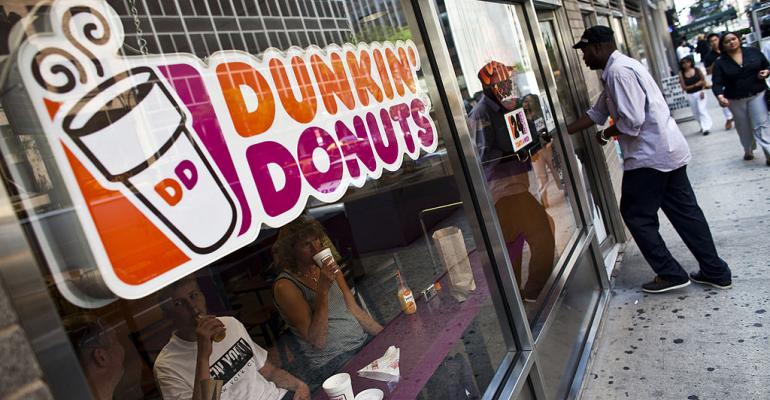Investors using 1031 exchanges continue to have a voracious appetite for triple net lease properties, and they are increasingly setting their sights on restaurants.
“People are shifting to e-commerce-resistant retail, and restaurants are at the top of the list of what people are looking for,” says Randy Blankstein, president of the Boulder Group, a net lease advisory firm. “So it has gone from a category that five years ago was considered specialty to very much a mainstream category that is getting a lot of interest from a lot of new players.”
Casual dining restaurants are trading at a slight premium compared to the retail sector as a whole, at 6.0 percent compared to 6.19 percent. That gap was even more pronounced a year ago, when casual dining restaurants were averaging cap rates of 5.75 percent, according to a June 2017 casual dining report released by The Boulder Group. However, a larger percentage of higher cap franchise-owned deals that have traded have pushed cap rates higher amid strong buyer demand.
In the first quarter of 2016, franchise-backed leases accounted for only 31 percent of the casual dining sector compared to 49 percent in the first quarter of 2017. Casual dining restaurant properties with corporate guarantee leases had cap rates of 5.75 percent, while franchisee-leased properties were priced 50 basis points higher, at 6.25 percent, according to the Boulder Group.
The restaurant category has been very active lately, and in many cases, demand is outpacing supply, adds Keith Sturm, a principal at Upland Real Estate Group Inc., a commercial real estate brokerage and investment firm based in Minneapolis. Although there continues to be a healthy supply of for-sale restaurants, some buyers are having a tough time finding exactly what they want in terms of price, location, credit and brand. “When you add all of those up, it really becomes a challenge to find a property that fits all of their criteria,” he says.
Flavor of the month?
Restaurants have always fit the sweet spot for 1031 investors. The typical price point for restaurants is between $2 million and $3 million, which is often ideal for individuals and 1031 investors and below the minimum investment amount for most institutions. Buyers also like buying restaurant brands that are familiar, have a business that is easy to understand and are in growth mode.
These days, restaurants are all the more attractive given some of the fall-out in the retail sector and positive consumer spending trends on dining out. According to the National Restaurant Association, average restaurant spending per capita is at $1,071 per year, or roughly $89.25 per month.
Restaurants have stepped up growth plans, while many retailers have pulled back, which is creating a steady pipeline of new investment opportunities. Retail store closures are also creating opportunities for restaurants to move into end-caps or freestanding stores with higher visibility. “Dunkin Donuts is a good example of that, and I think you will see a lot more of that in the years to come,” says Blankstein.
No indigestion yet
The boom in restaurant expansion in recent years has raised questions about whether restaurants are getting over their skis a bit with oversaturation that may lead to store closings in some markets or specific categories. To that point, chain restaurants in the U.S.—an estimated $112.3 billion industry—are forecasting slower revenue growth ahead due to saturation and increasing competition from fast food chains. The chain restaurant market, which includes major players such as Darden Restaurants, has been on a growth pace of 3.7 percent over the past five years and is now expected to slow to 2.0 percent through 2022, according to IBIS World, a global business intelligence firm.
“I don’t think there is an oversaturation issue yet. I think what people are concerned about [are] certain concepts,” says Blankstein. Some restaurant brands are struggling amid new competition, a dated brand image and/or lack of appeal among younger consumers. Applebee’s and Ruby Tuesdays are examples of two companies that have seen sales slide, notes Blankstein.
Properties leased to top investment grade tenants, such as McDonald’s, Burger King and Starbucks, continue to command the highest prices. However, even those concepts that are struggling may still have individual stores that are performing well in certain markets. And those restaurants that may have a weak or non-institutional grade tenant can compensate with strong real estate locations and/or strong sales, says Sturm.
For example, Upland is still seeing a lot of good activity among some of the lesser and non-credit deals such as Arby’s and Applebee’s. Some buyers would rather buy an Applebee’s in South Dakota versus a McDonald’s in Chicago simply because the returns are much better, says Sturm. People do prefer free standing, triple net properties with higher credit. But at the end of the day, it comes down to the lease, the location and the credit of the tenant to determine the value of the property, he says.

